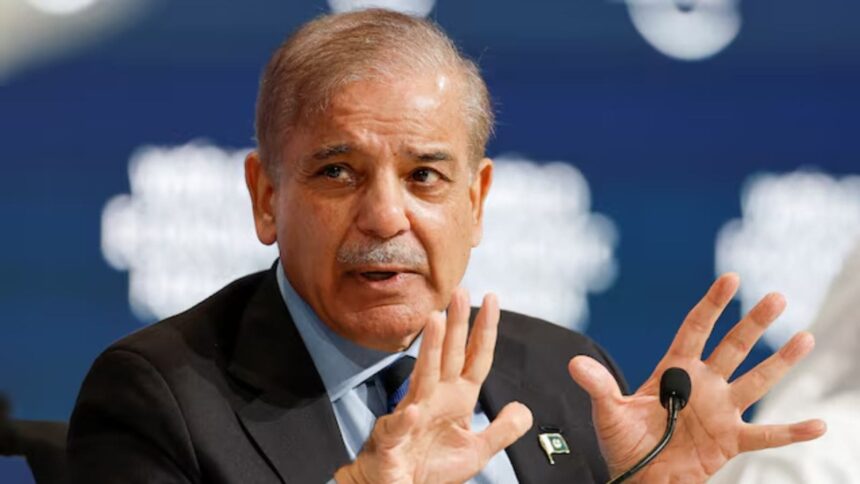The Board of the International Monetary Fund Friday cleared $2.3 billion in funding for cash-strapped Pakistan, even as New Delhi abstained from the vote after having firmly opposed the move stating providing funds to a country that supports cross border terrorism carries reputational risks and undermines international norms.
The lifeline notwithstanding, high debt and perilously low foreign exchange reserves significantly add to the fragility of the Pakistan economy, which is grappling with an almost perennial balance of payment crisis and high in recent years.
Its external debt jumped to over $130 billion in 2024, with more than a fifth of this estimated to be owned by its key ally China. Its forex reserves are pegged at a little over $15 billion, capable of paying for just about three months of imports.
The forex reserves remain low relative to funding needs, with over $22 billion of public external debt, including nearly $13 billion in bilateral deposits, maturing in FY25, as per a Fitch report in February.
IMF Board approved the first review of Pakistan’s economic reform program under the EFF, enabling a disbursement of ~ $1 billion, reflecting strong program implementation which has contributed to continuing economic recovery.
— IMF (@IMFNews)
On Thursday, the Ministry of External Affairs said it would ask the IMF board members to look “deep within” and take facts into account before generously bailing out Pakistan.
In such a dire situation, a money-guzzling conflict with India should be the last thing on a beleaguered Islamabad’s mind, as it would have to essentially fund any long-drawn-out conflict with borrowed money. And while a prolonged military conflict with Pakistan is bound to impact India to some extent, the world’s New is far more equipped to handle the economic impact. These crucial points have been underscored by experts and analysts more than once.
In fact, just two days before Operation Sindoor, Moody’s Ratings cautioned that “sustained escalation in tensions with India would likely weigh on Pakistan’s growth and hamper the government’s ongoing fiscal consolidation, setting back Pakistan’s progress in achieving macroeconomic stability”.
The global ratings agency said that a persistent increase in tensions with India could also impair Pakistan’s access to external financing and pressure the country’s forex reserves, which remain “well below what is required to meet its external debt payment needs for the next few years”.
With elevated debt levels and low reserve buffers, Islamabad had earlier managed to get a bailout package from the IMF in September 2024 with the approval of a $7-billion loan, following which its economy has shown some early signs of a recovery from the brink of a collapse.
As per the latest South Asia Development Update released in April by the IMF, Pakistan’s economy has been recovering from a combination of natural disasters, external pressures, and inflation. While inflation has slowed more quickly than expected along with strong imports of capital goods and high consumer confidence suggesting a pickup in private sector growth, the incoming data on economic activity have been weaker than expected, the IMF said.
Economic growth of Pakistan is projected to rise to 3.1 per cent in the financial year 2025-26 from 2.7 per cent in the financial year 2024-25, 2.5 per cent in 2023-24 and a contraction of 0.2 per cent in 2022-23.
The ongoing 37-month long Extended Fund Facility programme of the IMF consists of six reviews over the span of the bailout. The other multilateral bank, the World Bank, also expects Pakistan’s economic activity to grow 3.2 per cent in FY26 and 3.5 per cent in FY27. It also flagged that Pakistan’s growth will likely remain constrained by tight macroeconomic policies focused on rebuilding fiscal and external buffers and mitigating risks to economic imbalances.
Potential macroeconomic policy slippages — driven by pressures to ease policies — along with geopolitical shocks to commodity prices, tightening global financial conditions, or rising protectionism could undermine the “hard-won macroeconomic stability”, the IMF had pointed out in its statement in March this year after the first staff-level review of the loan facility extended to Pakistan.
Funding from other multilateral institutions like the World Bank and the Asian Development Bank is also crucial for Pakistan’s economic revival and securing it would be a challenge as India steps up its ante by seeking support from all MDBs.
When the bailout package was secured by Pakistan last year, the IMF in its report in October had assessed the overall risk of sovereign stress for the country as “high”, saying that it reflected “a high level of vulnerability from elevated debt and gross financing needs and low reserve buffers”.
“Notwithstanding the new government’s intent to deepen reforms under a new Fund-supported program, political uncertainty remains significant, and pressures for easing policies and providing tax concessions and subsidies are strong. A resurgence in political or social tensions could weigh on policy and reform implementation. Policy slippages, including particularly on needed revenue measures, together with lower external financing, could undermine the narrow path to debt sustainability, given the high level of gross financing needs, and place pressure on the exchange rate and on banks to finance the government,” the IMF report had said.
As for the impact on India, Moody’s said: “Comparatively, the macroeconomic conditions in India would be stable, bolstered by moderating but still high levels of growth amid strong public investment and healthy private consumption. In a scenario of sustained escalation in localized tensions, we do not expect major disruptions to India’s economic activity because it has minimal economic relations with Pakistan”. The ratings agency, however, added that higher defence spending in such an eventuality would potentially weigh on New Delhi’s fiscal strength and slow its fiscal consolidation.
Experts and multilateral institutions have repeatedly flagged major structural problems and other risks plaguing the country’s economy that have largely remained unaddressed. These include high fiscal and current account deficits, political instability, low agriculture and industrial productivity, protectionist trade policies, heavy government interference in business, a large and inefficient public sector, a financially unsustainable and import-dependent energy sector, weak exports, and a small taxpayer base, among others. Natural calamities like widespread floods have also exacerbated Pakistan’s economic woes in recent years.








